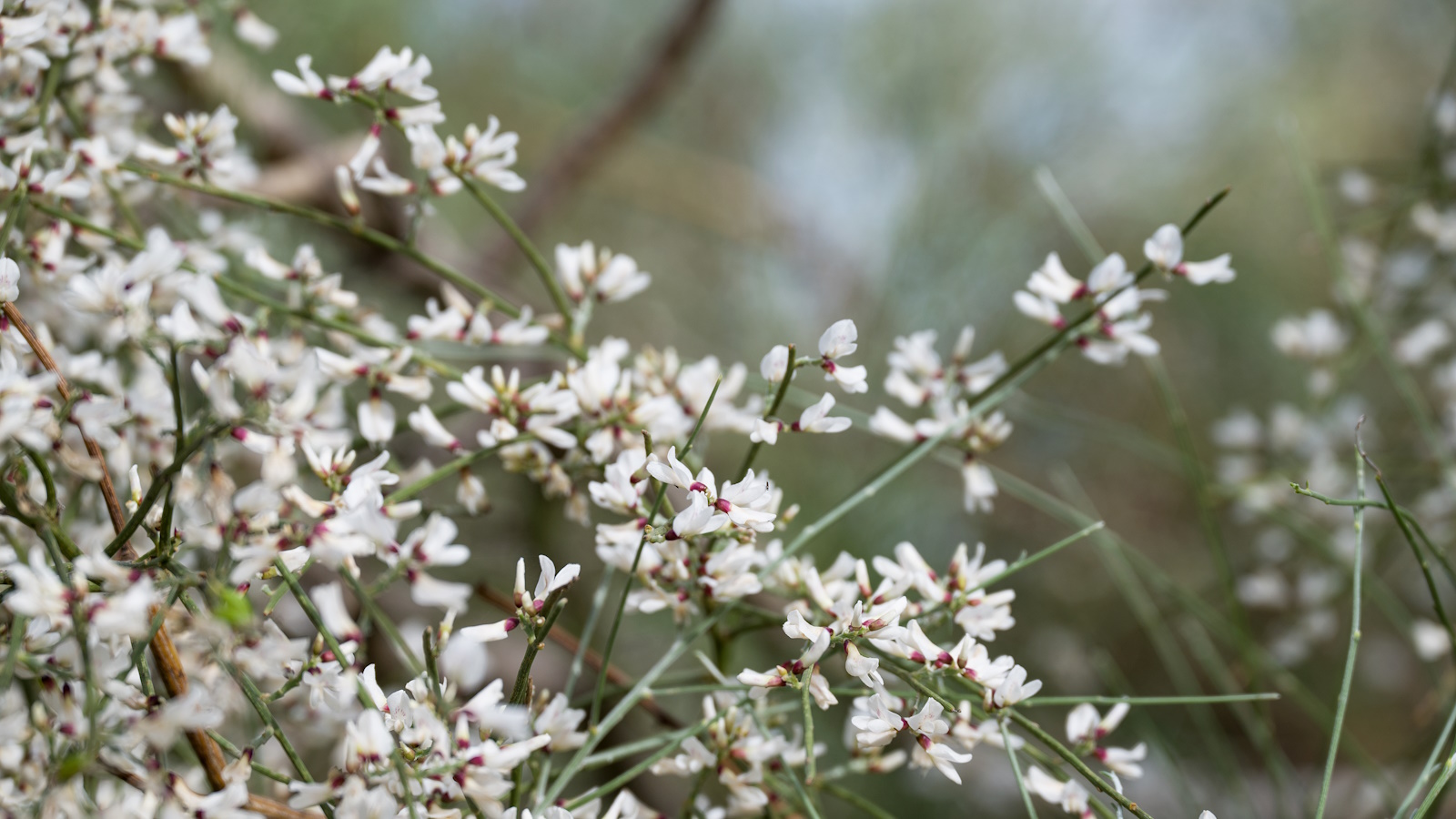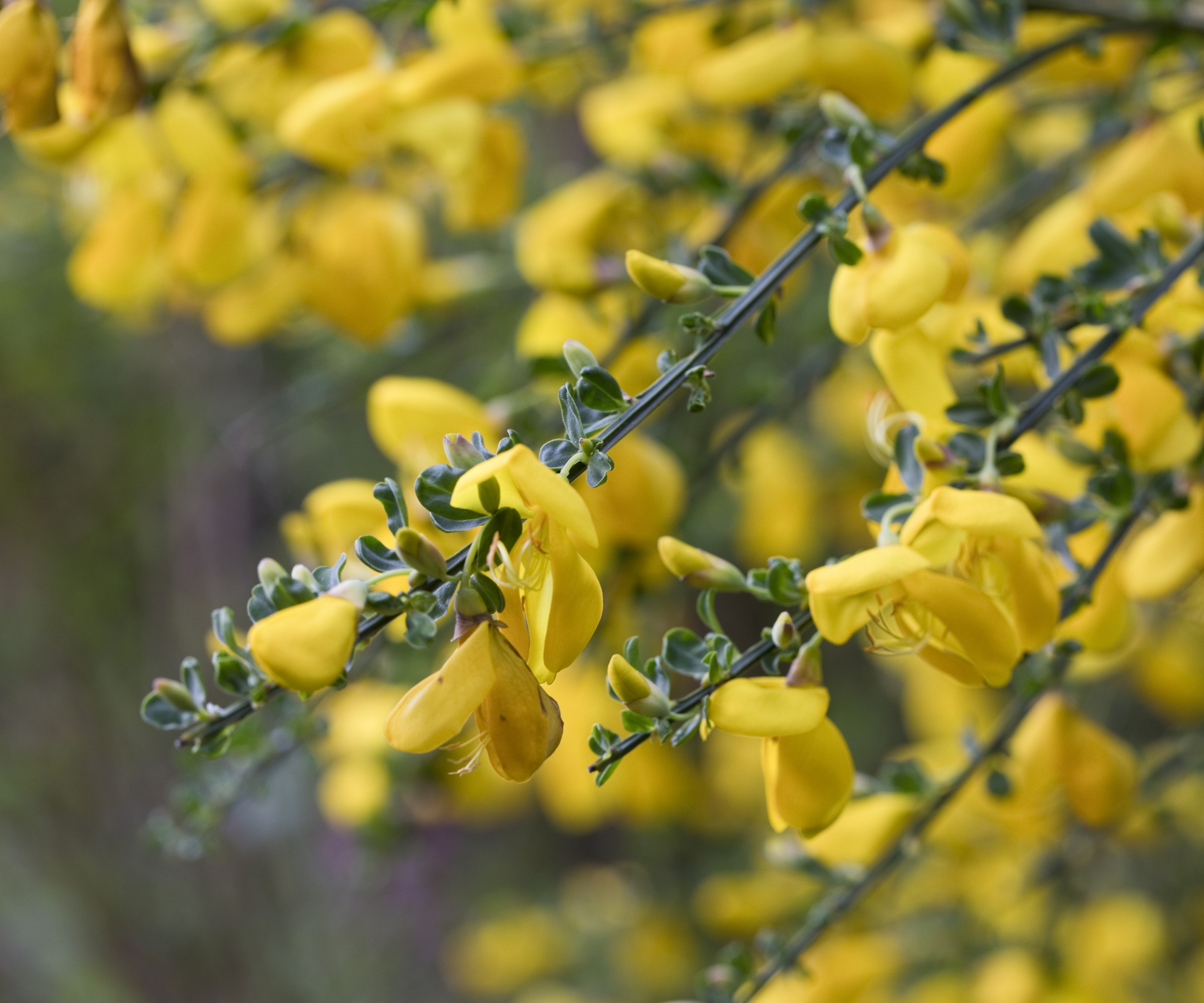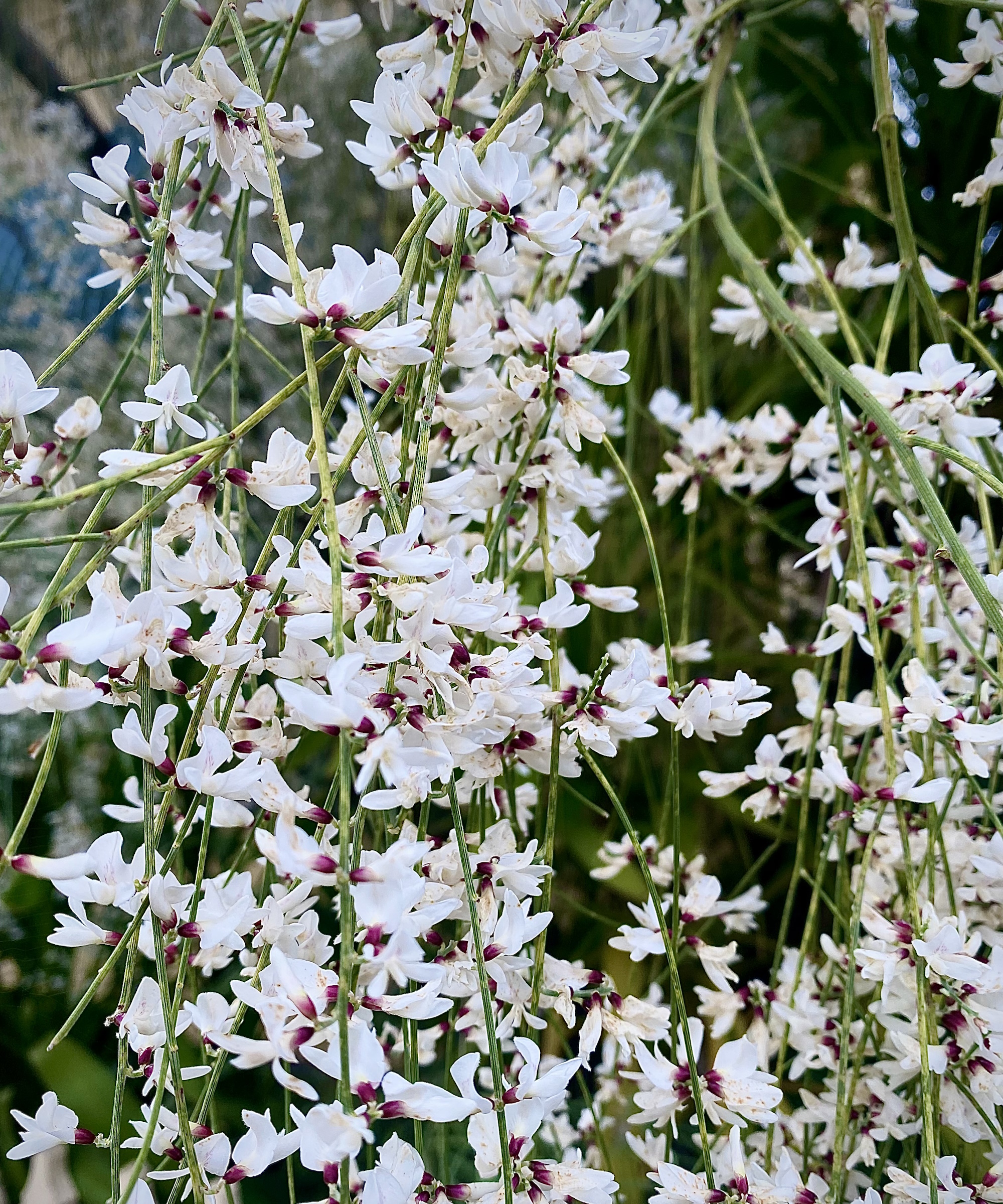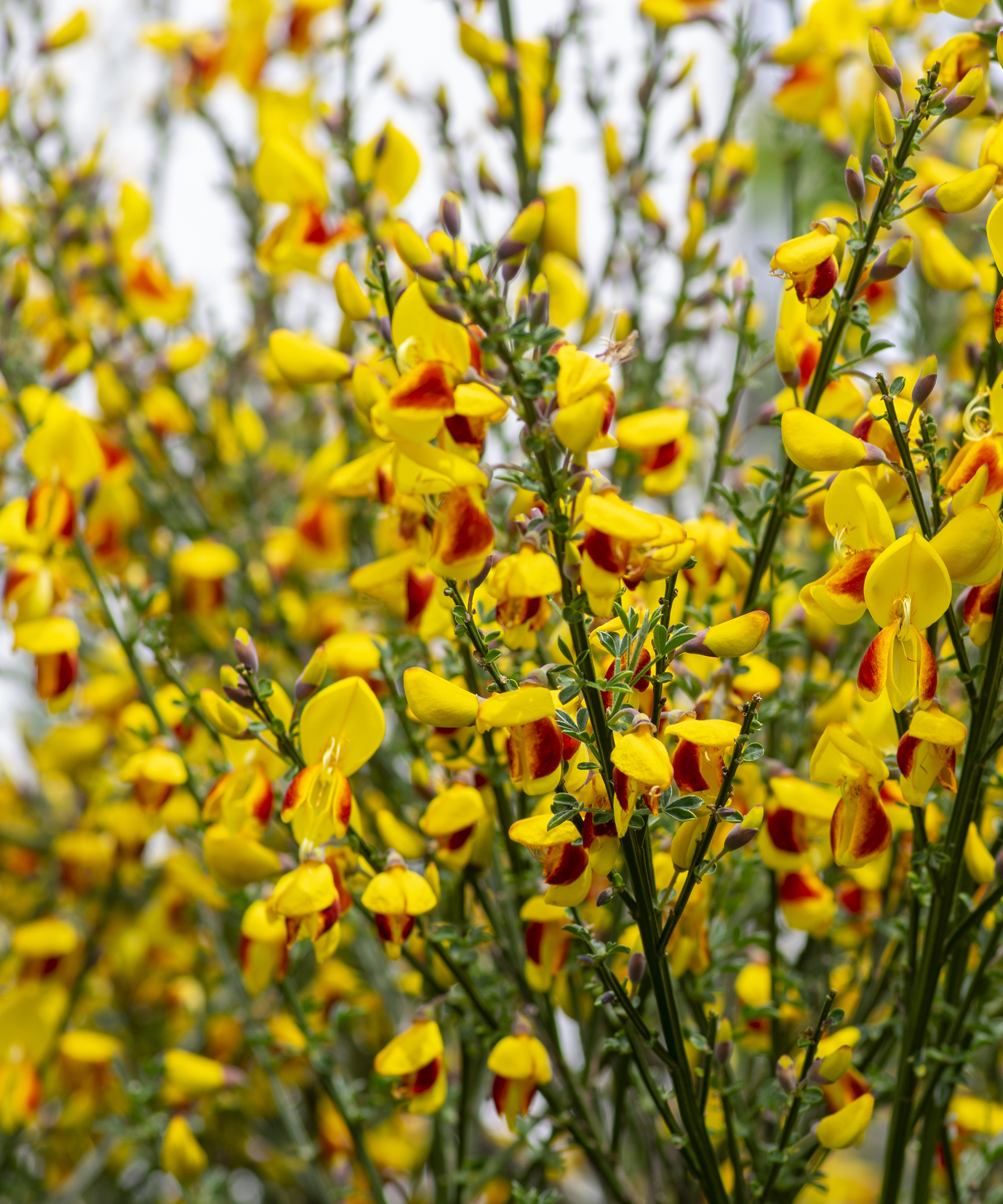How to grow broom plants – expert advice on the perfect shrub solution for troublesome spots in your yard
Brooms are lovely spring-blooming shrubs, but they are way more valuable for their ability to grow where other plants wouldn’t survive.


Brooms, which encompass species within both the Cytisus and Genista genera, bring pops of vibrant springtime color to those troublesome sandy and gravelling soils. Native to scrubby sites in Europe, Western Asia and North Africa, cultivars of these shrubs are problem solvers, transforming problem areas into beautiful landscapes.
The brooms shine most brilliantly in late spring and early summer, bearing mostly yellow but sometimes purple, lilac or white pea-like flowers. The pea-like flowers make sense since both Cytisus and Genista are in the Fabaceae, or pea family. The rest of the growing season they appear as 4- to 6-ft. tall angular shrubs with green stems and very small leaves. This habit gives it the appearance of an old-fashioned broom, hence the common name.
The brooms are certainly one of the best flowering shrubs to have in your garden, especially if you are dealing with lean soils and a lack of additional resources. These shrubs can transform an underserved space. Our experts share some of their insights into how Cytisus and Genista can benefit a thoughtful landscape.

How to grow broom plants
How can shrubs from two different genera both be called brooms? Because they have an incredibly similar appearance and habit. A check of the flower can help identify a Cytisus from a Genista.
For Cytisus, the upper lip of the calyx is shortly toothed, while that of Genista is deeply cut into two lobes. Other slight differences exist, such as in stem shape (Cytisus is star-shaped in cross section while Genista is rounder) and soil tolerance.
In terms of hardiness, Genista is a bit hardier than Cytisus, with the former hardy in USDA zones 4-9 and the latter hardy to USDA zones 5-8
Whether it’s Cytisus or Genista, the brooms are a darling in the landscape. ‘Genista aetnensis, a Genista lydia, and Cytisus x praecox ‘Hollandia' are wonderful textural plants with evergreen stems and an overall fine-textured modern grassy aesthetic,’ says Preston Pew, horticulturist at Cistus Nursery outside of Portland, Oregon.
Design expertise in your inbox – from inspiring decorating ideas and beautiful celebrity homes to practical gardening advice and shopping round-ups.
‘Both Genista combine well with summer dry western native plants and other Mediterranean climate-adapted plants.’ And even more importantly, their flowers are visited frequently by pollinators such as bees, wasps and hummingbirds, Preston adds.
Growing habits of brooms

A red flag may come up in regard to some brooms, specifically the one known as Scotch broom, or Cytisus scoparius. This can be labeled as invasive in many parts of the US and should be avoided.
‘Anything you find in a store is going to be a different variety that is non-invasive, and is usually a hybrid,’ says Megan McConnell, Plant Information Director for Monrovia Plants.
‘The Cytisus variety ‘All Gold’ as it sounds is a nice bright yellow, and then ‘Minstead’ is a pink-purple, a nice different color,’ Megan says of two varieties. ‘People usually think of brooms as yellow.’ As for Genista, Megan recommends a variety called ‘Gold Flash.’ ‘It’s actually a ground cover,’ she says. ‘It’s really short at just 6-12 in. tall and about 3 ft. wide.’
What Megan likes about the brooms is that they are really easy to grow. ‘They are great for bad soils,’ Megan says. ‘They can take lean soils, and they are great for slopes, as long as they have good drainage.’
Megan says the brooms solve so many landscaping pitfalls. ‘They can be a good barrier or backdrop shrub,’ she says. In fact, according to Megan many Cytisus would rather have it dry than moist or wet, making it a great item for those troublesome spots in your yard.
Preston appreciates the ways the brooms can be used in the landscape, and this is another way that Genista and Cytisus differ. ‘Genista aetnensis is used as a small tree or can be grown as a screening plant with multiple trunks,’ Preston explains, ‘whereas G. lydia is a useful groundcover that is well adapted to dry summer and wet winter (mediterranean) climates.
'Cytisus ‘Hollandia’ is a dense shrub that is good for a low hedge or ornamental shrub. We have not found it is adapted to drought, so it may tolerate humid summer climates.’
Another way in which Cytisus and Genista differ is in their tolerance of soils. ‘Genista are better for alkaline soils,’ Megan explains, ‘and it turns out that they are a bit more tolerant of water, too.’

Megan McConnell is Plant Information Director at Monrovia Nursery Company. After getting her Bachelors of Science in horticulture at Oregon State University, she began her horticultural career as a landscape designer before joining Monrovia in 2016.

Preston Pew is a production manager at Cistus Design Nursery on Sauvie Island, just outside of Portland, Oregon, and is an expert on plants of the Pacific Northwest.
Care guide for brooms

- Soil: ‘The species and variety I mentioned all do well in well-drained lean or mineral soils, so not overly organic and on the dry side in summer,’ Preston says.
- Light: Both Megan and Preston know the brooms to be full-sun shrubs, with a minimum of six hours of sunlight.
- Watering: Megan says the brooms are reliably water-wise, but first ‘you need to get their roots established before they are resistant to drought.’ This watering-in period could be a year or two.
- Fertilizing: Plants in the Fabaceae or pea family are nitrogen fixers, and they get nitrogen from bacteria that 'inhabit structures on the roots of the plants,’ Preston explains. ‘Planted in the ground, they do not require fertilizer. In containers they will require regular fertilizer. A balanced fertilizer with equal proportions is recommended for brooms in containers. You can find an organic fertilizer for shrubs on Amazon.
- Pruning: 'All can be pruned in summer following flowering,’ Preston notes. ‘Both Genista I mentioned respond strongly to heading cuts, producing plentiful shoots after pruning.’
FAQs
How do we make sure broom plants won’t be invasive in our area?
‘We reassure people that these varieties are hybrids,’ Megan says. ‘They're not the invasive variety that you've heard about. ‘Minstead’ Scotch broom may have ‘Scotch’ in the common name, because it is technically a hybrid of the Scotch broom, but it’s not the invasive one.’ Again, if it's being sold at a garden center, it's more than likely a non-invasive variety.
Neither Megan nor Preston notes any pests that bother the brooms. Megan did mention, however, that these shrubs are deer resistant, which is a great quality to have in both suburban and rural areas.
For other deer-resistant garden suggestions, check out our guide to 20 plants and shrubs that are resistant to deer. From beautiful spring and summer blooms to shrubs with winter interest, you’ll find something you’ll love for your yard that will keep the deer at bay.

Ellen Wells is a horticultural communications consultant with 30 years experience writing about all aspects of the gardening world, and for GardeningKnowHow.com since 2024. She specializes in retail horticulture, vegetable gardening and tropical plants. Ellen is based in southern New England where she gardens in zone 7a.
